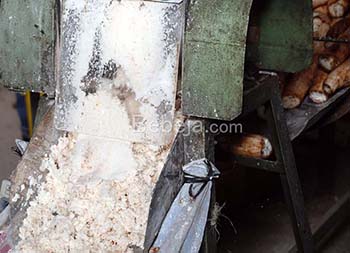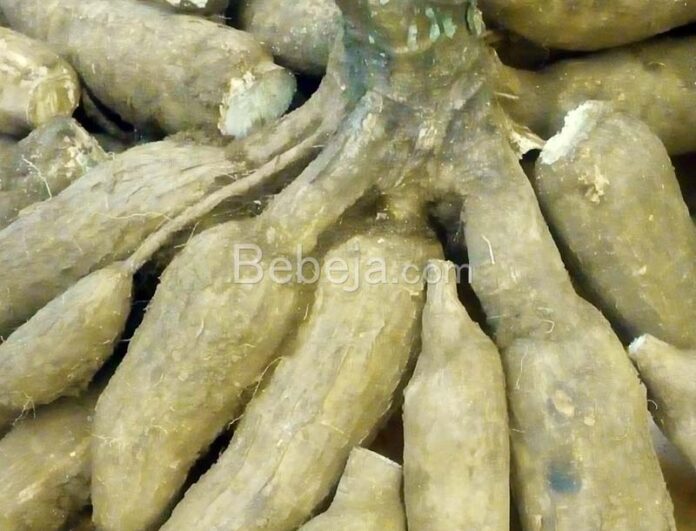Cassava can be converted into bioethanol. A researcher from the Department of Chemical Engineering at Bandung Institute of Technology, Dr Ir Tatang H Soerawidjaja, showed that starch in members of the Euphorbiaceae family can be converted into glucose using the fungus Aspergillus sp.
Here’s how to produce cassava bioethanol at a capacity of 10 liters/day
1. Peel 125 kg of fresh cassava. Clean and chop into small pieces.
2. Dry the chopped cassava to a maximum moisture content of 16% so that it becomes manioc. The aim is to make the cassava more durable so that it can be stored as a reserve of raw material.
3. Place 25 kg of cassava in a 120-liter stainless steel tank, then add water to make the volume 100 liters. Heat the manioc to 100°C for 30 minutes. Stir the manioc until it becomes a slurry and thickens.
4. After the manioc mash has cooled, add the Aspergillus sp fungus, which breaks down starch into glucose, to the saccharification tank. To break down 100 liters of cassava mash, 10 liters of Aspergillus fungus solution, or 10% of the total mash is required. The concentration of the fungus reaches 100 million cells/ml. Before use, Aspergillus must be cultured on cassava pulp to adapt to the chemical properties of cassava pulp.
5. After two hours, the cassava pulp turns into two layers: water and sugar sediment. The starch that has become sugar is stirred and then placed in the fermentation tank.
Before fermentation, ensure that the sugar content of the starch solution is no higher than 17-18%. This sugar level is favorable for the Saccharomyces bacteria to live and work to break down the sugar into alcohol. If the sugar level is higher, add water until it reaches the appropriate level. Otherwise, add sugar solution.
6. Close the fermentation tank tightly to prevent contamination and allow the saccharomyces to work to break down the glucose more efficiently. Fermentation is anaerobic. For optimal fermentation, keep the temperature at 28-32°C and pH 4.5-5.5.
7. After 2-3 days, the starch solution turns into 3 layers. The bottom layer is the protein sediment. Above is water and ethanol. Fermentation contains 6-12% ethanol.
8. Siphon the ethanol solution through a 1-micron filter paper with a plastic tube to filter out the protein precipitate. Although filtered, the ethanol is still mixed with water. To separate it, distill it. Heat the mixture of water and ethanol to 78°C, or the boiling point of ethanol. At this temperature, the ethanol will evaporate before the water. The ethanol vapor is passed through a tube submerged in water so that it condenses and returns to liquid ethanol.
 The distillate is 95% ethanol and is insoluble in gasoline. To dissolve it, 99% ethanol is required, called dry ethanol. Therefore, absorption distillation is required.
The distillate is 95% ethanol and is insoluble in gasoline. To dissolve it, 99% ethanol is required, called dry ethanol. Therefore, absorption distillation is required.
The 95% ethanol is then heated to 100°C. At this temperature, the ethanol and water evaporate. Both vapors are then passed through a tube lined with zeolites. The zeolite absorbs the water so that 99% ethanol is obtained.
